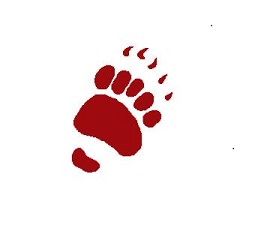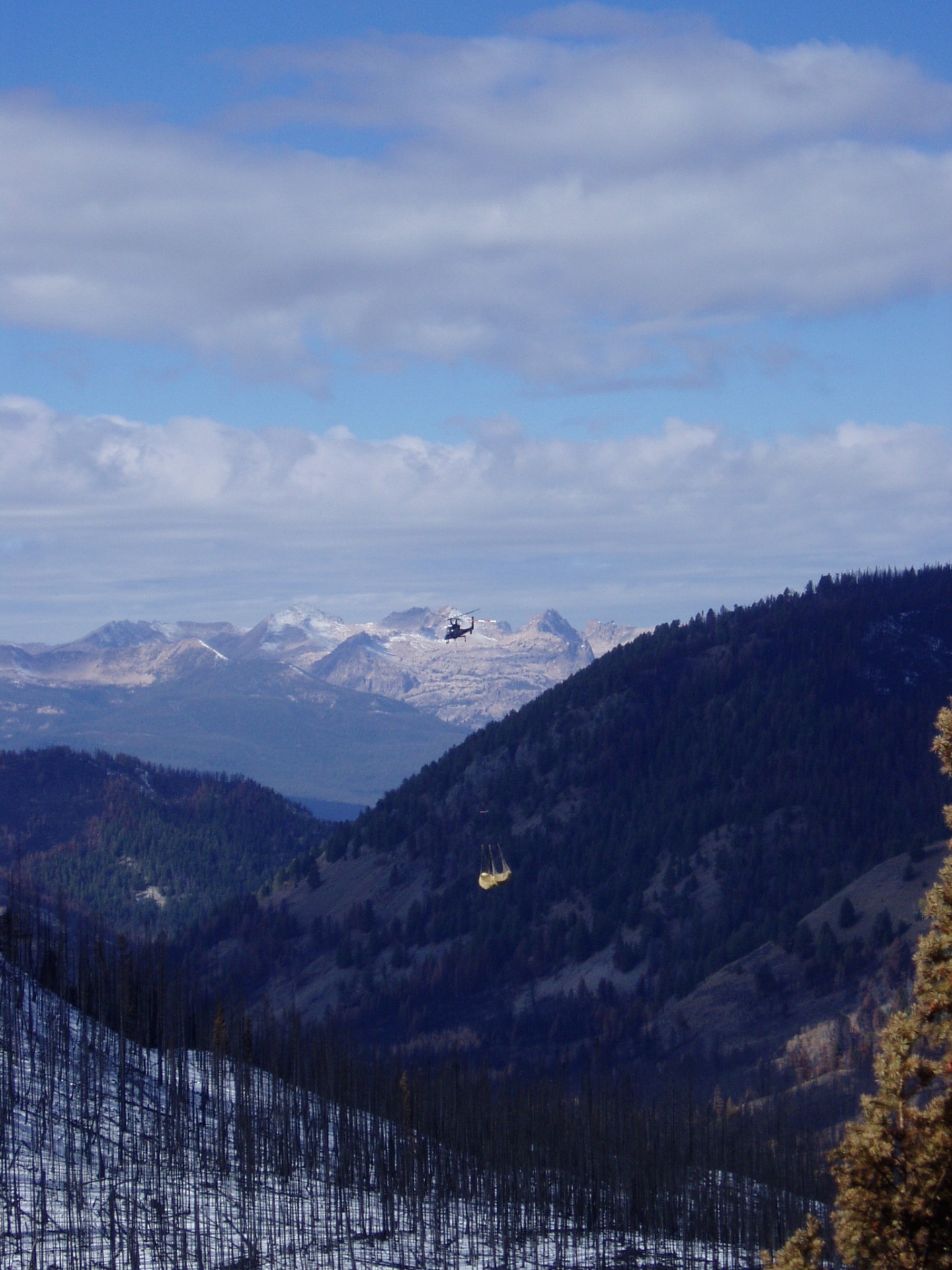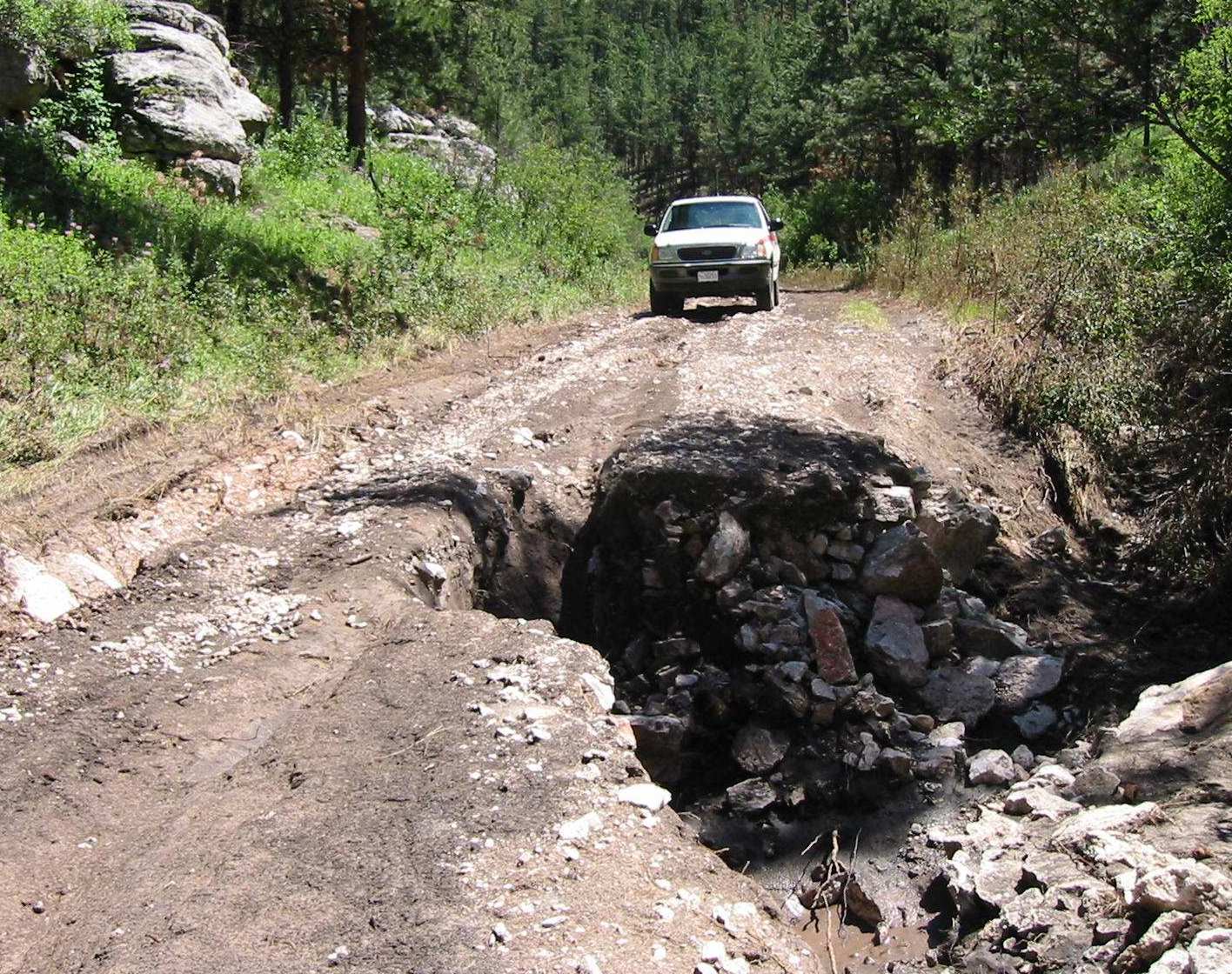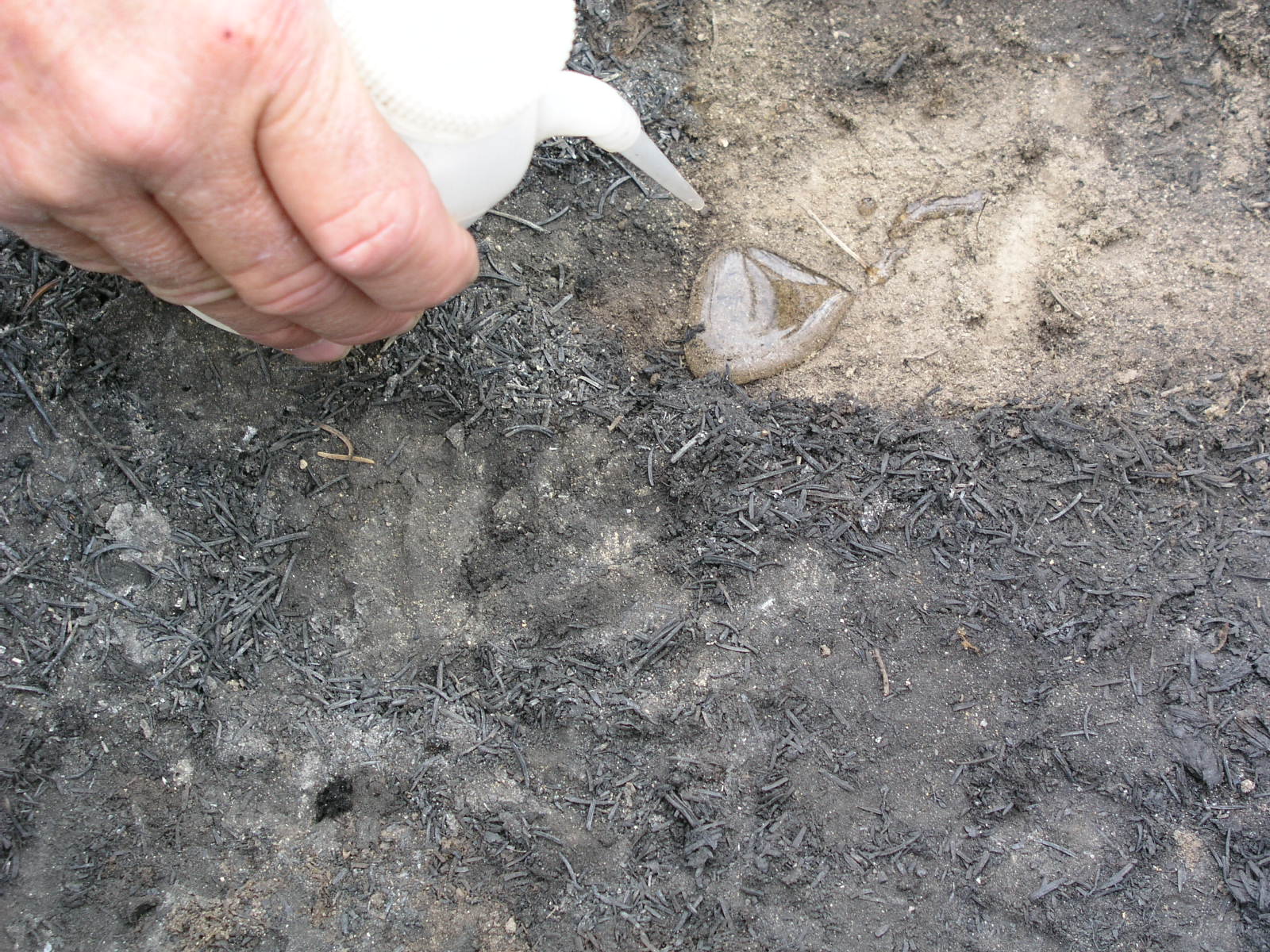Wildfires can cause complex problems, from severe loss of vegetation and soil erosion, to a decrease in water quality and possible flash flooding. Post-fire recovery is facilitated through a program called Burned Area Emergency Response, or BAER. BAER addresses post-fire emergency stabilization and other post-wildfire problems in order to protect public safety and prevent further degradation of the landscape and to mitigate post-fire damages to cultural resources.
Emergency stabilization is part of a holistic approach to address post-fire recovery, which also includes wildfire suppression activity damage repair, burned area rehabilitation, and long-term restoration. In order to facilitate this process, a designated BAER team will begin the process by assessing an area post-fire.
The composition of a BAER assessment team is determined both by the size of the fire and the nature of values potentially threatened by post-fire effects. Generally, specialists in soils, hydrology, geology, engineering, wildlife, botany, and archeology assess the fire’s effects and predict the post-fire effects. Each resource specialist brings a unique perspective to the BAER process, to help the team rapidly determine whether the post-fire effects constitute urgent threats to human life, safety, property, or critical natural and cultural resources. They produce an integrated plan to respond to those threats.
Purpose of the BAER Program
The BAER program is designed to address emergency stabilization issues related to wildland fire. The program determines the need for, prescribes, and implements emergency treatments on federal lands to minimize threats to life and property resulting from the effects of a fire. If needed, the program also stabilizes and prevents unacceptable degradation to natural and cultural resources.
The program is utilized by all federal land management agencies. The BAER team performs emergency stabilization actions within one year of wildfire containment. These actions are intended to stabilize and prevent unacceptable degradation to natural and cultural resources, minimize threats to life or property resulting from the effects of a fire, or to repair, replace, or construct physical improvements necessary to prevent degradation of land or resources.
The Department of the Interior (DOI) firefighting bureaus also utilize Burned Area Rehabilitation (BAR) efforts, which signal the beginning of restoration efforts. BAR begins within five years of a wildfire containment in order to repair or improve fire-damaged lands that are unlikely to naturally recover to management approved conditions. BAR actions are also taken as an effort to repair or replace minor facilities damaged by fire.
Not every wildland fire will require the services of a BAER team. In fact, most of them do not. The determination not to utilize BAER is not a reflection of the importance of a specific wildland fire, it simply means that the anticipated post-fire impacts to natural and cultural resources from that specific fire were not at an unacceptable level and the land can recover naturally.
BAER is not an opportunity to fix historic problems, expand programs or personnel, or conduct new surveys or long-term restoration. Treatments do not prevent all potential flooding or soil erosion impacts, especially after wildfire-changed landscape. It is important for the public to stay informed and prepared for potentially dramatic increase run-off events.
Partnerships
BAER does not do work on privately owned lands affected by wildland fire. The scope of work is limited to federally managed lands only. However, private landowners can benefit greatly when their land neighbors federal land that has been treated by a BAER team.
Throughout the BAER process, BAER teams work with multiple federal agencies, as well as local emergency responders, to help protect human life and private property. The teams share information from their assessments and offer recommendations on mitigative measures to lessen the impacts of fire on surrounding communities and private landowners. There are several other federal agencies that work closely with BAER. The work that these agencies are involved in can also have impacts to local communities and private landowners.
BAER assessment plans and implementations of BAER emergency actions are a cooperative and coordinated effort between many federal agencies such as the Bureau of Indian Affairs, Bureau of Land Management, National Park Service, USDA Forest Service, U.S. Fish and Wildlife Service, and also including state, tribal governments, local agencies, and emergency management departments. It is important that a BAER team coordinates its assessment and the local unit coordinates treatment with all affected and interested cooperating agencies and organizations regarding other post-fire recovery and restoration efforts.
NOAA's National Weather Service provides weather, hydrologic, and climate forecasts. They also issue flood watches, warnings, flood inundation maps, and stream flow predictions.
United States Geological Survey provides real-time streamflow and water level data.
Federal Emergency Management Agency supports citizens and first responders to ensure that the nation works together during a presidentially declared disaster.
The United States Department of Agriculture (USDA) Natural Resources Conservation Service aids communities through the Emergency Watershed Protection Program.
The Assessment and Review Process
During the assessment stage, BAER can identify all values at risk. Agency funds can only be spent on agency or tribal trust lands. The BAER team will work with other emergency authorities and communities to notify them of risks within their jurisdiction but can only treat federal lands or Indian Tribal Trust lands. Treatments on federal land may benefit downstream private land, but treatments on other than federal land must be developed and accomplished by other means. BAER assessment plans and implementation are often a cooperative effort between federal agencies, state, tribal, and local forestry and emergency management departments.
There are a variety of emergency stabilization techniques that the BAER team might recommend. Commonly used techniques include reseeding of ground cover with quick-growing or native species and straw mulching. The team also assesses the need to modify road and trail drainage mechanisms by installing debris traps, modifying or removing culverts to allow drainage to flow freely, adding additional drainage dips and constructing emergency spillways to keep roads and bridges from washing out during floods.
The assessment of a burned area includes a review of existing resource documents and management plans. Prior to conducting field reviews, the team will be briefed by the local unit regarding the fire and known values at risk. Maps are used to identify structures and infrastructure within and downstream of the burned area. Each BAER team member consults appropriate references (such as databases, maps, and inventories) to identify additional values at risk.
Soil resource and ecological unit inventories provide baseline information on soil characteristics, including erosion potential, slope class, soil texture, and management limitations. Review of hydrologic records, including historic records of magnitude and duration of events, frequency curves, flood history, and records of past wildfires. These resources help the hydrologist understand a watershed’s response to fire. The access and travel management plan and road management objectives, which are products of the roads analysis process, provide information on roads including jurisdiction, maintenance level, and resource concerns.
Next, the field review focuses on the fire’s effect, such as changes in vegetation cover and watershed response, and identifies potential values at risk. The BAER team specialists look at:
- Amount and distribution of high and moderate burn severity within each watershed.
- Presence and extent of water-repellent soils.
- Presence and extent of effective soil cover.
- Potential needle-cast from existing vegetation.
- Vegetative recovery timeframe and potential for noxious and invasive plant spread.
- Flood-prone areas and downstream effects.
- Debris-prone areas and downstream effects.
- Flood-source areas and downstream effects.
- Potential for stream diversion at trail and road crossings.
- Channel stability and riparian vegetation conditions.
- Potential for increased erosion or sedimentation.
- Potential for water quality deterioration.
- Barriers to natural water flow (e.g., fencing, stockponds, dams).
- Physical hazards at campgrounds, trailheads, and facilities.
- Capacity and condition of structures at stream crossings.
- Condition of road infrastructure including signs, guardrails, and road delineators.
- Potential hazardous materials contamination created or exposed by the fire.
- Downstream values outside the fire perimeter that may be at risk.
- Potential impacts on road and trail prisms to increased erosion and runoff from adjacent hillslopes.
- Access needs on routes throughout the burned area to facilities, residences, and campgrounds.
Outcomes
Once the assessment is completed, the BAER team presents its findings in an assessment report that identifies immediate and emergency actions needed to address post-fire risk to human life and safety, property, cultural, and critical natural resources. This includes early detection and rapid response treatments to prevent the spread of noxious weeds into native plant communities. The BAER report describes watershed pre-fire and post-fire watershed response information, areas of concern for life and property, and recommended short-term emergency stabilization measures for lands that burned.
In most cases, only a portion of the burned area is treated. Severely burned areas, steep slopes, and places where water run-off will be excessive and may impact important resources, are focus areas and described in the BAER assessment report if they affect values-at-risk. Time is critical if the emergency stabilization measures are to be effective.
Funding
Special emergency wildfire suppression funds are authorized for BAER activities and the amount of these expense varies with the severity of the fire season. Some years see little BAER activity, while other years are extremely busy.
Wildfire Rehabilitation Efforts and Treatment Selection
There are three phases of rehabilitation following wildfires on federal lands:
- Fire Suppression Damage Repair
- Emergency Stabilization – Burned Area Emergency Response (BAER)
- Long-Term Recovery and Restoration
The Assessment and Review Process
Fire Suppression Damage Repair
A series of immediate post-fire actions taken to repair damages and minimize potential soil erosion and impacts resulting from fire suppression activities and usually begins before the fire is contained, and before the demobilization of an Incident Management Team. This work repairs the hand and dozer lines, roads, trails, staging areas, safety zones, and drop points used during fire suppression efforts.
Emergency Stabilization – Burned Area Emergency Response
A rapid assessment of burned watersheds by the BAER team to identify imminent post-wildfire threats to human life and safety, property, and critical natural or cultural resources on federal lands and take immediate actions to implement emergency stabilization measures before the first major storms. Fires result in loss of vegetation, exposure of soil to erosion, and increased water runoff that may lead to flooding, increased sediment, debris flow, and damage to critical natural and cultural resources. BAER actions such as: seeding, mulching, installation of erosion and water run-off control structures, temporary barriers to protect recovering areas, and installation of warning signs may be implemented. BAER work may also replace safety related facilities; remove safety hazards; prevent permanent loss of habitat for threatened and endangered species; and prevent the spread of noxious weeds, and protect critical cultural resources.
Long-Term Recovery and Burned Area Rehabilitation
In some cases, DOI may provide additional funding to improve burned areas and achieve desired conditions for up to five years after containment. Burned Area Rehabilitation (BAR) supports the healing process and provides a “bridge” to long-term recovery. Allocation of BAR funds involves a rigorous and competitive process to evaluate projects to ensure the most critical areas receive treatment first.
This phase utilizes non-emergency actions to improve fire-damaged lands that are unlikely to recover naturally and to repair or replace facilities damaged by fire that are not critical to life and safety. This phase may include restoring burned habitat, reforestation, other planting or seeding, monitoring fire effects, replacing burned fences, interpreting cultural sites, treating noxious weed infestations, and installing interpretive signs.
| What BAER may do: | What rehabilitation activities may NOT be done by BAER: |
|---|---|
| Install water or erosion control devices | |
| Plant for erosion control or stability reasons. | Replant commercial forests or grass for forage. |
| Install erosion control measures at critical cultural sites. | Excavate and interpret cultural sites. |
| Install temporary barriers to protect treated or recovering areas. | Replace burned pasture fences. |
| Install warning signs. | Install interpretive signs. |
| Replace minor safety related facilities. | Replace burned buildings, bridges, corrals, etc. |
| Install appropriate-sized drainage features on roads, trails. | Repair roads damaged by floods after fire. |
| Remove critical safety hazards. | |
| Prevent permanent loss of threatened and endangered habitat. | Replace burned wildlife habitat. |
| Monitor BAER treatments. | Monitor fire effects. |
| Implement early detection and rapid response treatments to minimize the spread of noxious weeds into native plant communities | Treat pre-existing noxious weeds |
Tools of the Trade
Once a BAER team determines that a fire has created an urgent need to implement emergency stabilization measures, the treatment selection process begins. The BAER assessment team identifies appropriate treatments and measures that best respond to the potential threats or hazards using reliable and proven land, channel, road/trail, and protection/safety methods. In some cases, treatments may not be practicable so some other measure may be prescribed, such as administrative closures. Often several treatments are recommended to reduce or mitigate the effect of the threats in a burned area. The BAER team considers numerous treatment-selection factors in consultation with the agency administrator and leadership team including:
- Nature of downstream values at risk
- Effectiveness of treatment
- Treatment combinations, such as land, channel, road/trail, protection/safety, to reduce risks
- Timeframe for implementation
- Personnel and resources available for implementation and monitoring
- Hazards associated with treatment implementation
- Ease of treatment implementation
- Cost effectiveness of treatments
- Coordination with other federal, state, and local agencies
Generally, a combination of land, channel, road/trail, and protection/safety treatments are selected. The synergy of treatments often provides the most effective set of stabilizing factors. Not all treatments are as effective at obtaining the emergency stabilization objectives.
Land Treatments
Land treatments stabilize burned areas by preventing or reducing fire’s adverse effects. They foster recovery by providing soil cover and reducing erosion, trapping sediment and reducing sedimentation, and/or reducing water repellency and improving infiltration. They also maintain ecosystem integrity by preventing expansion of unwanted species.













